Overview
Part 2: Companies are bought, not sold
One of the most well-kept secrets in silicon valley is the number of failed acquisition efforts for startup companies. Given that neither the buyer, the seller nor the intermediary advisors are willing to candidly discuss “what went wrong”, there is little information available on what a startup goes through in the acquisition transaction.
From my own perspective, the most common reason for a failed transaction is encountering new information during the due diligence period that is material to the expectations of the buyer or seller.
Most due diligence efforts do find issues, and many times those issues can be addressed by lowering the valuation or revising the deal terms.
With this perspective in mind, the best strategy for any private company wishing to be acquired is to get your house (company) in order, execute on the company’s leadership strategy and be ready for the due diligence effort. The question is: What does effort this entail?
This podcast is Part 2 of Companies are Bought not Sold engages Ken Burke, Founder of MarketLive and Mark Addison, Xrocket advisor in a transparent conversation about:
- Defining the scope of the leadership strategy
- How to prepare the company to be ready for due diligence
- Why Ken turned over operations to the executive team
- How the investment banker was selected
- How the transaction was negotiated
- Mark’s approach to finding value or “hidden gems” in a company
- Ken’s perspective on resisting dilution in successive funding rounds
Join us for Part 2 of Companies are Bought, Not Sold.
Transcript
Transcript: Part 2 – Companies are Bought
Jim: The startup media is flush with stories about successful outcomes, which have a happy ending as the startup is acquired by a large public company.
The exit or sale of the company sounds like a natural event, but the effort to sell a startup company is incredibly demanding and the fact is: there are very few public forums that talk about the challenges, strategies, and effort required.
This podcast is about how companies are bought not sold, and the strategies a startup company can apply to create a leadership profile corporate buyers will find attractive.
Part 1 was posted last week, starting with Ken Burke, the founder, and CEO of MarketLive, being replaced after 13 years with the company. If you have not listed to that episode, it’s worth going back to episode 23 to learn about the fallout after that decision was made and how Ken eventually returned to the CEO role. Upon his return, Mark Addison, CEO of xrocket.io joined Ken in his turnaround effort.
In this second segment, Ken and Mark take us through the process of preparing the company to be acquired.
Ken: About a year into kind of the cleanup I actually started a process looking for an investment banker. I said I think it’s now time, I was going to do this for two years to the investors. So I had a timeline and I had a dollar amount which is very important. So then I started the process which took about probably six months before I actually picked the investment banking firm I interviewed 10 firms and we had a very rigorous process we went through multiple interviews with each one. We narrowed it down because investment banking firms are very targeted as well as Mark talked about targeting your own company. There are there’s you have to get the right fit when you’re looking for that investment banker that you want to represent you.
Mark: One of the big valuation drivers is believing it or not, just governance is being squeaky clean really as having all of your employee contracts all in one place and having paid down your debt, be squeaky clean because when their due diligence comes in the negotiations, that’s how the buyer, even though they really want you, they can find these opportunities to start whittling away at the valuation. And that’s one of the things that you want to try to avoid allowing that to happen. So be squeaky clean.
Jim: Let’s join Ken Burke and Mark Addison for the final segment of Companies are bought, not sold.
Jim So Mark, your first role was to restore the reputation and help Ken get things back up and running and get the company positioned, so if a buyer emerged they were ready to go. Is that accurate?
Mark Correct position them figure out what sector they’re going to own and win and then position everything around that and make make sure that they become the number one company. A friend of mine works with a security software company and the senior vice president of sales here has this great expression. He said nobody wants to buy the second-best security software company.
Ken Which is interesting because actually the executive team and the founder people like Mark you can actually define this for yourself meaning this is in your control as an entrepreneur to actually define who you are. Yeah, you have to have the product right. You have to have kind of the internal structures right some processes your support staff and everything but the more narrowly defined yourself in a lot of cases the more narrowly you define yourself the better you are because then you can claim that leadership position and we did that and it worked. By the way that performance index but I can’t speak enough to that performance index which was we called the market performance index and basically it was chock full of industry data and it kind of said to the rest of the world: this is from all of our customers right. We have so many customers and so much data which we actually did by the way that we can publish something like this. And it became one of the things that all of the press knew every three months, Mark had set it up, boom and they were waiting for it and they wanted to publish it. So that was one of the keys to our leadership process.
Jim I can see that I know that takes some real intellectual thought to get that and to promote it and to make it work and to realize what data you have there and Mark I think I was reading a couple of your other profiles of companies here. You’ve done that and other events also you’ve mined the information in the archives if I can use that word of the other company who wasn’t selling it. You just went hey there’s value here and you promoted that. Is that one of the great on Hidden Gems and companies that you look for.
Mark [00:26:22] Often that is the strategic pivot is recognizing that there’s some nugget that is right under your nose that you don’t even recognize and it’s easier for us sometimes because we come in as outside consultants and we take a fresh look at the business and some things that are obvious to us or sometimes less obvious to people who are immersed in the day to day operations.
Jim So then what happened?
Ken About a year into kind of the cleanup I actually started a process looking for an investment banker. I said I think it’s now time I set out. I said I was going to do this for two years to the investors. So I had a timeline and I had a dollar amount which is very important. At the time I took over the company I told everybody by the way they all thought I was crazy the investor started I was crazy the employees I was crazy I didn’t tell the customers that I said we’re going to be worth over 100 million dollars I’m sorry. That’s just my goal. That’s what we’re going to hit. And I established that and I. And even though I was laughed at probably behind my back and in front as well of that valuation because it seemed like that was impossible at the time. That was not just the goal. It was what I was driven to do. Number one. So I had to take a year to clean up the company which by the way was a lot of fun turning around a company isn’t a bad gig especially when it was your company when you started it. So then I started the process which took about probably six months before I actually picked the investment banking firm I interviewed 10 firms and we had a very rigorous process we went through multiple interviews with each one. We narrowed it down because investment banking firms are very targeted as well as Mark talked about targeting your own company. There are there’s you have to get the right fit when you’re looking for that investment banker that you want to represent you and by the way, I do recommend that you get somebody to pay the money and get somebody to represent you because you don’t know what you’re doing. And I don’t care if you’ve even done it a couple of times. I would absolutely do it again. Here’s the good thing is we actually picked the right one. They were the right size for our company they got the valuation that I insisted upon even a little bit more actually. I said I wanted over a hundred million dollars they got over a hundred million dollars.
Jim Well you know I’m going to ask you to digress a little bit, because this is such a challenge that when the entrepreneurs get into discussing or looking like they can be acquired they go through that process. I mean all of the investment bankers make essentially essentially the same promises. What kind of due diligence did you do to make your decision?
Ken You know it was like I said it lasted for about six months so. So it was exhaustive I knew it was one of my major roles as the CEO and I kind of had the company running pretty well by then. So I didn’t have to obsess with day to day operations although I was involved. I actually operated at a higher level as a first-time entrepreneur or CEO when I founded the company and grew it right up until the time I was replaced. I knew every detail of the company intimately I knew what every employee was doing. And then of course as most founder entrepreneurs do what do they do. They go in and they dive in in the middle of things and create all this chaos and then they. And then they. And then, they surface and say go we’ll go clean it up, right. And then what it does is it just empowers the executive team. So I always say I learned how to be a CEO about a year or two before I was replaced because I had been a CEO for so many years. And then when I came back I also I learned how to be a good CEO not just a CEO. But I learned how to be a good CEO before I left. When I came back, I operated at a whole different level. And so I allowed the executives to take the burden of the company and I focused on things like selling the company or I’m sorry getting the company bought which actually I what you do. And by the way, that title of this podcast is also it was I was brainwashed from the time that we even thought about transacting the company that we are bought not sold good companies are bought not sold. And I heard it about a million times by my V.C. partners. And so I wanted to make sure we got the right firm and the due diligence included everything from decision matrix system mathematical scoring to interviews with everybody I had all my VC’s involved in the choice as well. Well, a couple of them, that was key, in that I used on an ongoing basis. They also did interviews with the one’s that were kind of the finalists if you will. And then we made our final choice.
Mark When we mapped out the valuation drivers with the M&A brokers and by the way, I would second that use an M&A broker even if you have a pretty good idea of who’s going to acquire you still use a broker. It’s the same reason why sports agents and movie celebrities use agents. But one of the big valuation drivers is believing it or not, just governance is being squeaky clean really as having all of your employee contracts all in one place and having paid down your debt and knowing if we even give our clients we have an online portal a governance portal where they can start to upload all that so that when we do do the handoff to the M&A broker it’s all in one nice tidy little place. So yeah be squeaky clean because when their due diligence comes that that’s how you in the negotiations. That’s how the buyer. Even though they really want you they can find these opportunities to start whittling away at the valuation. And that’s what you’re one of the things that you want to try to avoid allowing that to happen. So be squeaky clean.
Ken. Absolutely. And you know interesting with MarketLive’s case is that because we have gone through five rounds of investment we’ve actually got really good at getting everything organized. So when we did the exact Mark’s exactly right around making sure that you have all of your ducks in a row we literally got the term sheet. Our transaction was done in 30 days. So from term sheet a week we met with them and about three weeks after I met with them we had an offer. The offer was higher than I thought it was gonna be so it was above my goal right. And so there were no negotiations. We took it because they had already negotiated and by the way, my investment bankers were even coming to me. Actually the offer was under 100 million dollars and they wouldn’t bring it to me because they think the guy went back. Chris, I’ll never forget. He’s like I can’t go back to Ken with this offer. It wasn’t that it was that far off of 100 million but I can’t go back. So you better sweeten the deal. They sweeten the deal. He came back and we’re like We’re done. We’re good. No negotiation needed. And we literally closed the transaction from acceptance to actual close within 30 days. o that’s because we had our stuff to go.
Jim Due to what Mark had helped our reputation.
Ken It all adds up.
Jim So with that two last topics covered on this and I don’t care how long it goes at this point as I’m fascinated by the information. One is post-transaction. Now what happens to you continue to run the company?
Ken No not at all. I didn’t want to. So it’s interesting how much so one of my criteria was well one which I could have bent a little bit but I was really a lot of founder entrepreneurs that are bought have to stay with the company up in a lockup and all that. I kind of told my investment bankers that was one of the requirements as I was kind of done. I had done this for 21 years. I was ready to go on vacation for a year and later the next day I went off to Europe. So I was done. So one of the conditions of sale was I didn’t have a lockup. I was paid cash. I wasn’t paid any stock. For me, it was the right thing. I can’t suggest other entrepreneurs not to take stock or not to have a lock-up or anything but if you don’t have to have any of that then you have the freedom. I also didn’t invest in the company. It wasn’t that I didn’t believe in the new company I figured I just wanted to be more diversified. They did allow that but I didn’t I didn’t want to take part of my stock and say OK I’m going to use out and keep it in part of the of part of the company.
Mark Jim I was going to add to that that understanding how strategic buyers work in this case with a private equity buyer understanding how are a lot of times it’s part of a roll-up strategy. That’s another way of understanding how you can get your company acquired is understand that there are strategic buyers out there who are looking to assemble pieces of technology to create that rollup strategy. So if you’re a part of. I think you even commented this to me, Jim, if you’re part of a supply chain you know look to your left look to your right looked who’s one step above you. Who is one step below you and figure that you could probably have some sort of M&A or marriage with those two companies and you can become an anchor in a roll-up.
Jim From what I see the most common scenario is somebody who either is your supplier or your customer knows you and you have a partnership relationship and they go. This is a pretty good relationship we could extend our reach as a company extend our role in the supply chain by acquiring them either up chain or down chain. And it’s a very easy thing to already know you. They pay a price. And it’s probably the most common way to I say: look at that supply chain where you are and know where you are.
Mark But know where you are and back to a common theme in this podcast and be the best at that will be the number one at that.
Ken You’ll end up with a higher valuation because it’s a strategic purchase. By the way. I mean we were bought by a private equity firm. But I would say it was also very strategic for that private equity firm they wanted in this industry of e-commerce badly. So and they wanted to grow it, unlike other private equity firms that buy that kind of company. And in a not so good way. They need to squeeze them for profits and things like that they actually wanted to use us as a base it was very strategic for them.
Jim So I wanted to take a minute or two minutes or whatever you can whatever it takes really. I want to hear about how a CEO preserves their equity percentage.
Ken You fight like hell for you actually.
Jim First of all, let’s start with day one. Did you have co-founders?
Ken No.
Jim All right. You’re a hundred percent owner now. You start hiring people and you start. Did you establish a stock option plan? Of course. Absolutely. 20 percent maybe.
Ken [00:38:03] Yeah. In the early days, it was. Yeah.
Jim So you’re in 80 percent. I mean you haven’t given all the options out but you’re essentially on a fully invested a fully diluted basis. You’re an 80 20. They have 20. And their shares are vesting. Did you have a vesting schedule yourself?
Ken No. I had founder shares I did as equity rounds happened. I did get some options as well which ended up proving very valuable to me on the transaction as well. They were all fully vested. We did something on the transaction as well. Little technical we actually automatically vested everybody. So if they were one year in divesting or not. Fairly typical thing to do the acquire doesn’t want to take note that those options. So my invested as well along with that but I had a lot of vested I invested shares but most of my shares were founders shares which by the way is better for tax reasons and there are a lot of reasons that those are good.
Jim. So you’re going through these successive rounds of equity in each one dilutes you down meaning more when it comes in and at one point you’re 80 percent. Now you’re 60. Now you’re 40. How did you hang on to a certain percentage?.
Ken You fight well you have to fight every round. So here’s what an entrepreneur might think and I run into this a lot with entrepreneurs I coach a lot of entrepreneurs as well. I run into like you know they’re like oh well if an investor is going to come in and I give up 30 percent or 40 percent Oh that’s OK because I still have 50 percent.
Ken Well, wait a minute first of all, every VC that invests in you allocates extra money because they know they’re gonna have to put in more money at least the early guys right. They all know they’re going to put in a second and third round. So you have to be very in tune with I kind of like learned how to run a business from a very frugal perspective. Even when I had millions of dollars of cash in the bank. That was number one I think most important. Number two: I said no participating preferred. And I know that some of the listeners out there may not know what that is. That’s not a great thing if you can avoid it. I also funny enough I had a very clean term sheet from Sequoia initially I guess I got lucky. I don’t know. And I think it was Sequoia way of doing things. Every term sheet after that, by the way, was the copy of the Sequoia term sheet. No participating preferred no multiples on value. I mean everything was very clean and it was in my favor so I got lucky there and that just kind of continued on.
Jim. Just so everybody knows what is participating preferred? I just I don’t want anybody listening go. What is this, “participating preferred”.
Ken So participating preferred essentially says that that how money is liquidated is is is liquidated in a certain preference and preferred shareholders can actually participate in the common share liquidation if you are simplifying it. Forgive me but it’s not a good thing because then they start to participate so they liquidate first preferred always liquidates first and then common liquidates. Well in participating preferred they actually continue to liquidate along with you.
Jim They (the investors )get their money back. They get their money back and then they participate based on the pro-rata in the pro-rata which is typically common.
Ken Which is the only thing left, right. So it basically for lack of a better term screws the common shareholders if it’s in there and a lot of entrepreneurs don’t actually know that entrepreneurs get so excited about getting round of fund financing they’re not thinking about 10 years down the road when liquidation happens. That’s why they exit with less than 5 percent. And I didn’t want that to happen to me so I fought tooth and nail to make sure that I preserve my equity okay.
Jim So you fought for non-participating meaning you just convert to common stock and you get your pro-rata of the common shares.
Ken . Right
Jim . Did you fight to maintain some other percentage?
Ken You know I fought to get really good valuations or what I could and I was very sensitive to dilution and they all knew it because I mean it was it became a joke at the board table you know about Ken’s sensitivity to dilution. So when you set that as a marker and I was so obstinate about it and remember I was a single founder so I had a lot of control which was kind of a nice thing. I was the majority shareholder common shareholder for the entire length of the company but by a lot. Yeah. So there is and I’m not saying this is ever out to get your screen. I’m sure there are people out there that do but mine were not. They were literally very very upstanding but they’re going to fight for their shares being the largest common shareholder. I had a lot of power in the process almost through the sale. Well up until the sale of the company they couldn’t really do anything without my approval. So by having that trump card I was for lack of a better term, I had negotiation power.
Jim So I just want to clarify this again for our listeners. You avoided significant dilution, but you did it also by getting higher value by proving the value evaluate it as new rounds came in the sense of your holdings grew in value.
Ken Yes, value without question. I think keeping the valuation of being frugal with how we spent the money only getting money when I absolutely needed it and never taking more than I need. Now we’re in an age where VC’s have so much money they’re like oh yeah we’ll just write your check for 20 million dollars. And like I’d only need five. Don’t. I don’t want 20 because I’m getting diluted with 20. And I know that the entrepreneurs get intoxicated with the money but I’ve watched company after company just spend it ridiculously. Right. One of that one of the stories that I have are for one when the new CEO came in the first thing he did he wanted an office close to his house so we were located in Petaluma. He built essentially or we leased a very expensive this was six million dollars all new office furniture a beautiful building in Foster City. Do you know what we’ve never had more than 10 people in that office ever. So I talk about a waste of money so. So we had to get out of that as soon as he left. We had to get out of that agreement very very quickly.
Jim One of the self-defeating moves is when a CEO moves his or her company here to Silicon Valley now has to pay the salaries and worse of all their other founding employees who get recruited away by Google Intel and Microsoft and all these big companies.
Jim So Mark, I want to come back to you. What’s the best way or what is the scenario that makes sense for you to come in and help the company grow their value.
Mark So I think all the company founders need to be thinking about that emanate exit and they need to be ready for that discussion when it comes. So sometimes you’re lucky and that buyer will come sooner than you’re expecting and you don’t want to have that panic board meeting where you’re saying oh my gosh you know do we take this offer. Do we not take this offer and your you know your finances aren’t ready. So you need to be prepared for that emotionally and intellectually and operationally where we fit in best is when a company thinks that in about a year from now they think they’re going to start talking some and many brokers. So that’s when we come in. And in that year to nine months is when we really start working on optimizing the company. Everything about the company to bake at best. Ready when that finally they emanate brokers coming and will even help with a handoff to the M&A brokers and help with the introductions to the and many brokers. And in that nine months to a year we are putting them through the valuation levers audit we are we actually have a formal audit where we go through and we check off where the. He sits on UN on all these levers that we’ve identified and we start working on on those values where those levers we’ve talked about some of them in this example with market life and some of those levers take some time to to get working and some of them are habits like governance habits that you just need to implement in the company so that you’re ready and you add up all the. And then some of very Strategic pivots like we’ve talked about the owning the mid-market. In the case of MarkeLive I can give you one other example. There was a company that came to us in a similar situation. They had tried to be acquired. The deal fell through. They came to us they asked us to help them make sure that that didn’t happen again. So we were brought in to really optimize the company will we found out that the deal fell through because they had essentially a software platform. Ran on an iPod and it was targeted at physical therapy for providers. So that’s a very very niche market. When we got into the company we discovered that all of the survey data from the software that they developed had been aggregated into a database over 17 years. They had a database of 22 million healthcare records and these were what’s called morbidity is medical speak for. What’s wrong with patient and modalities which is medical speak for. What did you do to help the patient get better. And then the efficiency ratios. And so we looked out at what was happening in the marketplace and we said Well given what’s happening with it with with big data and data analytics and predictive analytics and data science we position this company as a health care data analytics company and that made all the difference in the world and in nine months they got a very very good strategic offer from a big private equity firm in New York. So a lot of times it’s really identifying that core nugget that is really going to maximize the optimize the valuation of the company. Great.
Ken Can I tell you I can tell the entrepreneurs one other thing that’s kind of really important is that high prices very quickly to get really really good CFO that you trust. I happen to have an amazing CFO that was lockstep with me. We were partnered for two years into this and I will say that also made a huge difference because the CFO the controversial or crazy or at least I was anyway and the CFO was the stable one and a logical one. And we just played off of each other perfectly. I can’t tell you how important that is.
Jim Yeah, I agree with 100 percent. Now the question I got to ask is How do you know what is it good CFO?
Ken Funny enough, I recalled my CFO prior to me while I was CEO in the first version of market life. And the first call I made as soon as I decided to come back. Is to the CFO and I said a market was his name Mark you’re coming back right. And he’s like yep he was signed up instantly the next day I had my CFO in place and I was in place and the two of us really did we work more closely together than I ever thought I would with a CFO because entrepreneurs really don’t like CFO. They tell us all the things we can’t do right. And I got to tell you by befriending him. Well it was easy to befriend him because he was a great guy. But by befriending him in business and when we became partners in that regard we could do anything.
Jim Yeah I think that I agree with you 100 percent the CFO is so key to one you know telling the financial story for you because you know if you’re going to be the thought leader and the emotional visionary you can’t turn around say well our gross margins are 60%.
Ken Well it doesn’t come out the same way. Yeah. But when he says it, it’s real and he said it and because they actually believe what he says they kind of believe what I say but I’m the crazy guy running around with his hands waving right like I am today. They want to hear the stable guy that says this is what it is and I’ve done these numbers a hundred times that cool calm tone.
Jim Well you guys have been great. I have loved this show. I just had a blast here. So, Mark, you’ve got a company X rocket people I follow up with you what’s the best way for people to reach you.
Jim All right I knew you under a different domain. All right. And Ken I mean if you are open people following Oh my God of course.
Ken Absolutely. Of course on LinkedIn I’m also a Linkedin instructor as well so you can get all my e-learning courses and everything on LinkedIn learning as well which we just went live on literally this week. So I’m very excited about that of course. Just Ken Burke on LinkedIn and cannot. Ken@kenburke.com will get you there. And then finally you can visit EntrepreneurNow.com which is the network which has a lot of free content for entrepreneurs to learn how to actually run a business better.
Jim Well you guys were great. I thoroughly enjoyed it. I want to wish you both every success going forward.
Ken Thank you.
Mark Thank you for having us.
Contact Info
Ken Burke : ken@kenburke.com
Mark Addison : m.addison@xrocket.io
Jim Connor : Jconnor@gamechangers.tv
Website Link - : www.EntrepreneurNow.com
Ken Burke can be contacted on LInkedin, or at www.EntrepreneurNow.com
Mark Addison can be contacted at m.addison@Xrocket.io
Jim Connor can be contacted at jconnor@gamechangers.tv
or the website https://gamechangers.tv
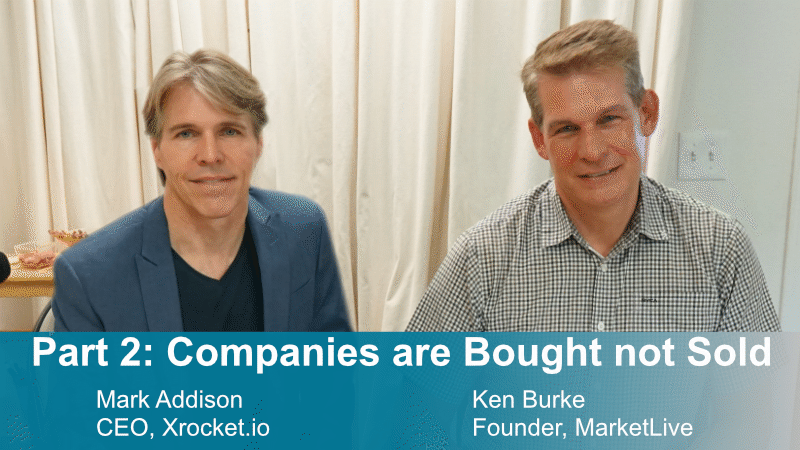



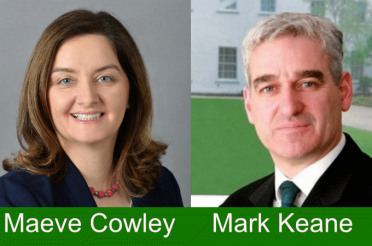

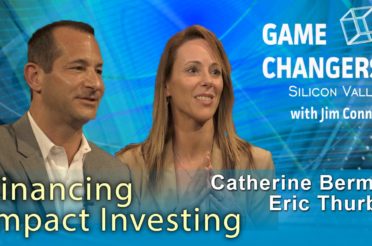
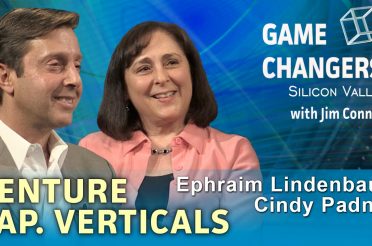
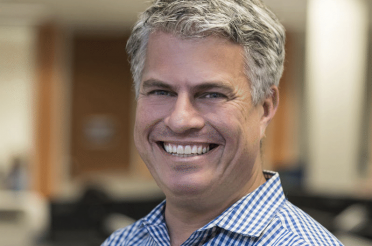
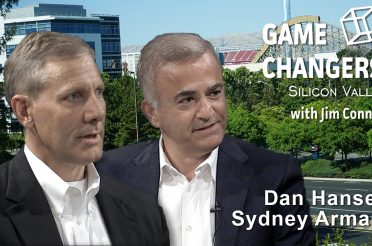
Leave a Reply
You must be logged in to post a comment.